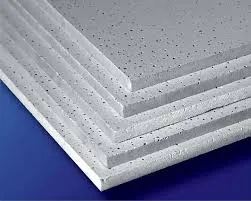8 月 . 06, 2024 15:41 Back to list
Exploring the Benefits of Drop Ceiling T-Bar Systems for Commercial Interior Design Solutions
Understanding Drop Ceiling T-Bar An Essential Element in Modern Interiors
Drop ceilings, also known as false ceilings, have become a popular choice for both commercial and residential spaces. They are designed to conceal wiring, ductwork, and other infrastructure while enhancing the aesthetics of a room. At the heart of this architectural feature is the T-Bar, a crucial component that supports the ceiling tiles and contributes to the functionality and look of the space.
What is a T-Bar?
The T-Bar is a framework that allows the installation of drop ceiling tiles. It is typically made from lightweight metal, most commonly aluminum or galvanized steel, and is shaped like a 'T'. These bars are installed in a grid pattern, providing a backbone for the ceiling tiles. The T-Bar system is designed to be durable, capable of holding the weight of tiles and any potential lighting fixtures installed within the dropped ceiling.
Benefits of Using T-Bar in Drop Ceilings
1. Aesthetic Flexibility T-Bar grids offer a versatile surface upon which various types of tiles can be installed. Homeowners and designers can choose from a variety of materials, colors, and finishes to match the aesthetic of the room. This flexibility allows for creative design solutions in both residential and commercial spaces.
2. Ease of Access One of the primary advantages of drop ceilings is the accessibility they provide to the systems hidden above. The T-Bar grid allows for easy removal and reinstallation of ceiling tiles, giving maintenance personnel quick access to electrical, plumbing, or HVAC systems without extensive labor.
3. Sound Insulation T-Bar ceilings can enhance acoustic performance when paired with soundproof tiles. This is especially beneficial in commercial environments such as offices and schools, where excessive noise can impact productivity and learning.
drop ceiling t bar

4. Affordability Compared to traditional ceiling installations, drop ceilings with T-Bar grids are generally more cost-effective. The material costs are lower, and the ease of installation means reduced labor expenses, making it a favorable option for many projects.
5. Concealment of Imperfections Drop ceilings equipped with T-Bar grids can effectively hide imperfections in the actual ceiling above, such as cracks or uneven surfaces. This makes it a perfect choice for renovation projects where the existing ceiling may not be visually appealing.
Installation Considerations
Installing a T-Bar drop ceiling requires precise measurement and planning. The process begins with measuring the room dimensions and marking the desired height of the ceiling. Once the layout is established, the T-Bar grid is secured to the walls and suspended from the main ceiling with hangers. It is essential to ensure that the grid is level and properly spaced to support the weight of the ceiling tiles.
While the installation seems straightforward, some challenges may arise. Ensuring that the grid aligns with the lighting fixtures or any HVAC vents can be tricky, and adjustments may be needed during installation. Therefore, it may be advisable to consult with or hire a professional for larger projects.
Conclusion
The T-Bar is a fundamental element of drop ceiling designs, providing both structural support and aesthetic appeal in modern interiors. Its benefits, including flexibility, accessibility, and affordability, make it a preferred choice among designers and homeowners alike. As the trend for versatile and functional spaces continues to grow, the T-Bar drop ceiling system will likely remain a staple in both commercial and residential designs, proving to be an essential feature for any creatively designed space. Whether seeking to enhance a home office or create a calming environment in a commercial setting, the T-Bar grid offers an elegant solution that balances form and function.
-
Revolutionizing Interior Design with Ceilings t grid Suspended SystemNewsOct.29,2024
-
Revolutionizing Ceiling Design with ceiling access panel with Gypsum Tile WaterproofNewsOct.29,2024
-
Revolutionizing Interior Design with PVC Gypsum Ceiling: A Comprehensive GuideNewsOct.29,2024
-
Elevating Interior Design with High quality Mineral Fiber Ceiling TilesNewsOct.29,2024
-
Revolutionizing Interior Design with PVC Gypsum Ceiling: A Comprehensive GuideNewsOct.29,2024
-
Elevating Interior Design with High-Quality Mineral Fiber Ceiling Tiles: A Comprehensive GuideNewsOct.29,2024







